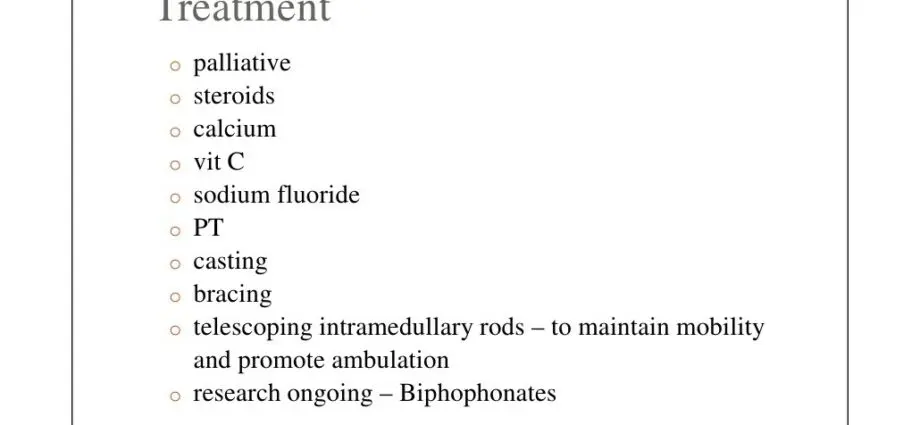Osteogenesis imperfecta medical treatments
No cure is available for osteogenesis imperfecta. This does not preclude offering treatment for the symptoms observed in patients.
First, a rehabilitative care is essential and prolonged throughout life from birth. It helps fight pain, ensure good muscle development and better joint mobility. It also prevents immobilization osteoporosis. Respiratory physiotherapy improves lung function. Balneotherapy also has its uses. This rehabilitation must be early, gentle and if possible active.
La orthopedic and surgical management is just as important. In the event of a fracture, the lightest and shortest possible restraint should be ensured (otherwise this may worsen the osteoporosis and the risk of fracture). In the event of repetitive fractures affecting the long bones of the lower limbs, nailing of the bones ensuring the consolidation of the bones and the correction of the deformities is performed. For the spine, the treatment (still complex) is based on posterior spinal arthrodesis (rods attached to the back of the column) to stabilize the column and ensure a seated position in a patient in a wheelchair.
Among the drugs, only biphosphonates opposing bone resorption have been shown to be effective. They are mainly used in children, help reduce pain and fractures and allow better mobilization.
In addition, the treatment of pain, which is still present, is based on analgesics.
The treatment of deafness is based on a delicate surgical intervention, due to the fragility of the bones or on an appliance.
Dental problems (dentinogenesis imperfecta) must be taken care of early. The treatment is based on the placement of crowns on the baby teeth. Implants may be needed in adulthood. Prevention involves good oral hygiene and the use of fluoride both systemically (tablets) and locally (toothpastes).
A healthy lifestyle and the regular practice of adapted physical activities are essential to ensure the best possible evolution of the disease.
Psychological support is offered to the patient and his family.
In urgent situations (fracture), it is imperative to contact the referral center which usually takes care of the patient.














